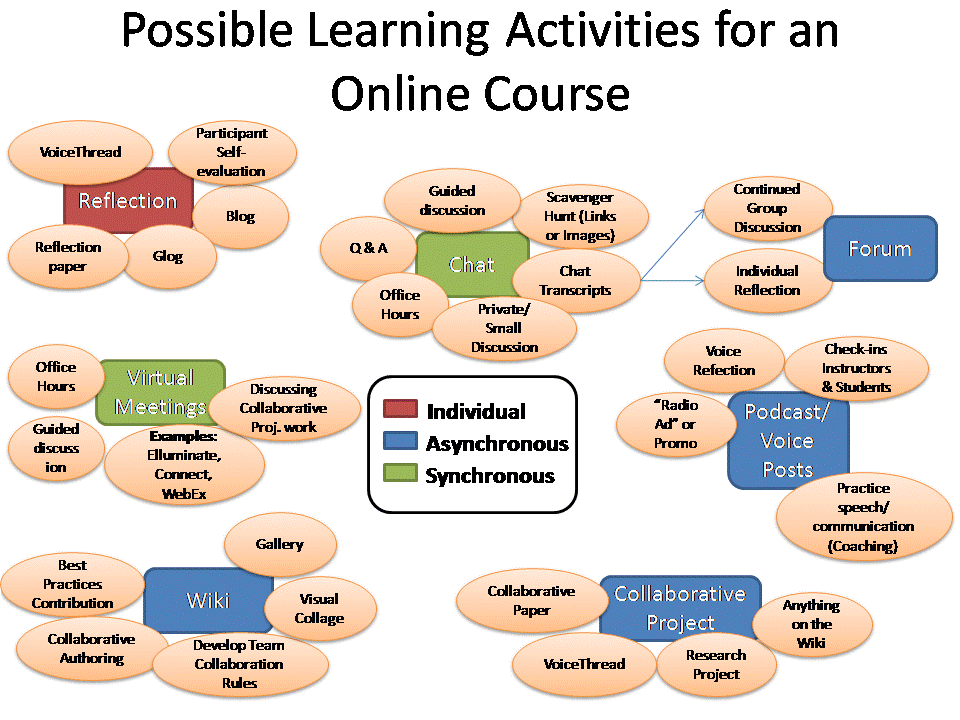Planning for Alignment and Engagement
Different Types of Learning Activities
There are many kinds of learning activities that you can plan for your online or blended course. From individual activities to group activities, from synchronous activities to asynchronous activities... your creativity is the limit. You can design online discussions, plan collaborative activities for discovery learning where students have to search the web and other resources to learn specific concepts to share with their peers, phased assignments where students submit pieces of work that build on each other, matching activities, ordering and listing activities, among others.
 |
| CC by SA 2.5 (http://nkilkenny.wordpress.com/category/analysis/) |
In blended courses, you can take advantage of the face-to-face sessions to engage your students in group work, debates, practice labs, role playing activities and many others.
Good and effective learning activities are relevant for the student learning and provide meaningful feedback aimed at guiding students through the learning process.

Examples
This site provides a few examples of self-guided and collaborative activities that can be integrated in online and blended courses.
Activities and Feedback
Every learning activity should include feedback to guide learners in their learning journey. Without feedback, it is difficult for learners to know if they are on the right track. Therefore it is important to include feedback on both correct and incorrect answers, and create opportunities to remediate learning upon completion of the activity, if necessary.

Reading Activity
This excerpt from "Creating Learning Materials for Open and Distance Learning" offers a good overview of learning activities with examples and a suggested activity format framework.
Characteristics of Effective Feedback
Feedback is most effective when provided immediately after the activity is completed, be it a quiz or a submitted assignment. Of course, an online quiz can be graded by the computer and, therefore, learner feedback can be provided immediately. However, if learners submit an assignment, it will take time for the instructor to grade it and provide appropriate feedback. It is important though to provide learners with feedback within as short a timeframe as possible (2-5 days constitutes acceptable practice).
The most effective feedback is comprehensive and explained to the learners. Telling your learners that their answer is "Correct" or "Incorrect" is somewhat helpful; however, telling them why it is "correct" reinforces learning and telling them why it is "incorrect" guides them in the right direction.

Examples
Have a look at this example of a simple online quiz. Notice how the feedback is provided with each answer. Try to answer some questions correctly and others incorrectly to see how the feedback is provided.
And this is a sample of feedback provided to an assignment that was submitted for grading. Notice the level of detail in the feedback provided - telling your students "Good job!" or "Needs improvement" doesn't help them much, so keep that in mind when grading any student work.
A few important considerations when planning learning activities:
- Learning activities should be meaningful and relevant for students and the subject matter being taught.
- Learning activities must be aligned with the learning outcomes
- Each learning activity should incorporate feedback to guide learners
- Each learning activity should be structured to include:
- Motivational introductions
- Clear instructions for the task to complete
- Answer grid
- Time guide (how long should students take to complete it)
- Feedback and comments

Discussion
Take some time now to participate in the Learning Activities discussion, where you will share the course plan you have created so far.